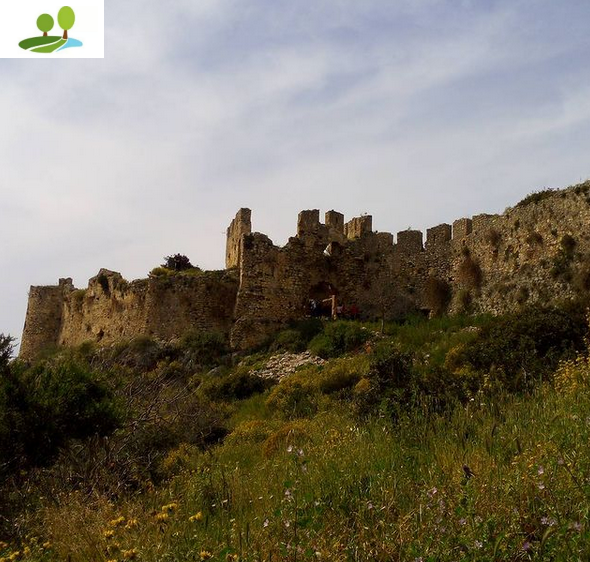
Achilles discovered among the daughters of Lycomedes
1630 - 1635. Oil on panel
Peter Paul Rubens
A model for the tapestry on the same subject that belongs to a series of eight about the Greek hero. The Story of Achilles is smaller than other projects by Rubens, but the quality of its sketches, models and tapestries make it one of his most important.
"Betrayed", wrote the seventeenth-century painter Pieter van Lint on his small drawing after one of the versions of the tapestry depicting Achilles Among the Daughters of Lycomedes, capturing the essence of the narrative in a single word. Thetis had taken her son Achilles to the island of Scyros to prevent him from accompanying the Greek army to Troy. Disguised as a woman, Achilles lived on Scyros among the daughters of King Lycomedes until the Greeks discovered his whereabouts and sent Odysseus and Diomedes to the island to fetch him. The two presented themselves as pedlars and placed a collection of trinkets before the young women. But Odysseus had cunningly concealed weapons among his wares, certain that Achilles would instinctively react to them. Achilles indeed reached out for the arms and thus betrayed himself. According to some classical sources, Odysseus was accompanied by a bugler, counting on Achilles to respond to the call of a bugle. In those accounts, Achilles tore off his dress and put on his armour. He had fallen in love with Lycomedes´s most beautiful daughter, Deidameia, who was pregnant with Neoptolemus (Pyrrhus) at the time of Odysseus´s visit. Rubens illustrated the moment when Achilles places the helmet on his head and grasps the significance of what he has done. His beloved Deidameia, with her sisters gathered around her, looks at him in dismay, aware of the drama about to unfold. Diomedes and Odysseus stand behind Achilles. The turbaned Odysseus looks back at someone outside the picture, holding his finger to his lips as if signalling silence. Here, Rubens may have been hinting at the buglers As in all the Achilles series, the terms allude directly to the central scene. The figure with a fox at her feet symbolises Cunning, while Minerva, the goddess of wisdom, is portrayed with an owl at the base of her shaft.
Many of the details in the modello differ from those in the sketch, although the two versions must originally have been very similar. Most of the changes were introduced at a relatively late stage. The term representing Cunning wears a mask in the modello and her head is inclined further to the left. The mask has slipped from her face, perhaps alluding to Achilles´s exposure. The garlands, merely suggested in the sketch, are now covered in flowers. The background architecture is consistent with the sketch, the only differences being that the capital of a column in the left foreground is obscured by the shaft of the column and the balustrade has an additional profile. The figures are also basically the same as in the sketch.
Rubens assigned the studio different tasks from those in The Education of Achilles (P2454). An assistant must have painted the terms and the architectural elements, including the cartouche and the building in the background, but the principal figures of Deidameia and her sisters were executed by Rubens from the start. He probably also painted the three men and the dog. The architecture in the background must have been painted first, with spaces reserved for the figures to be added later (Text drawn from Lammertse, F.; Vergara, A.: Peter Paul Rubens. The Life of Aquiles, Museum Boijmans Van Beuningen-Museo Nacional del Prado, 2003, pp. 85-92).

Δεν υπάρχουν σχόλια :
Δημοσίευση σχολίου